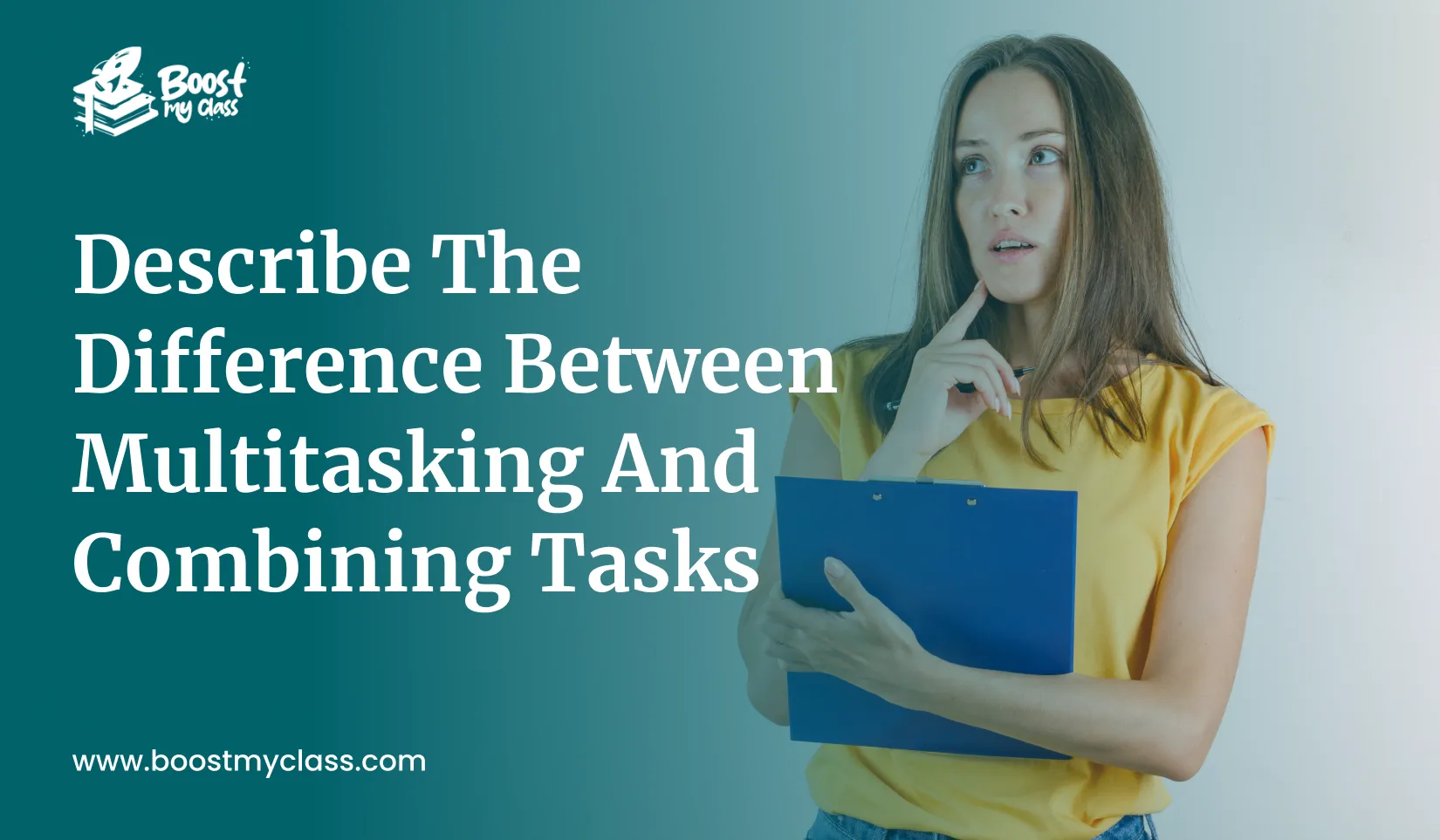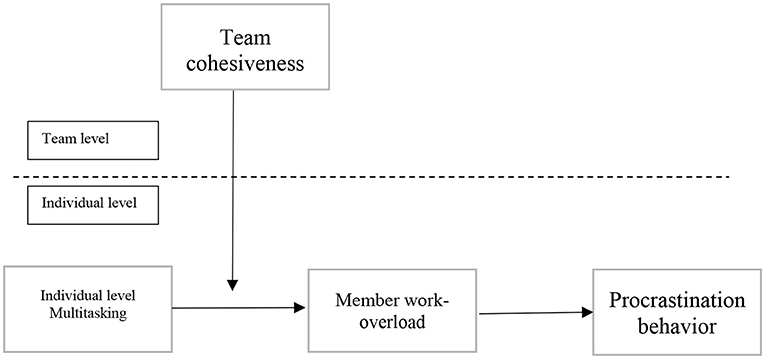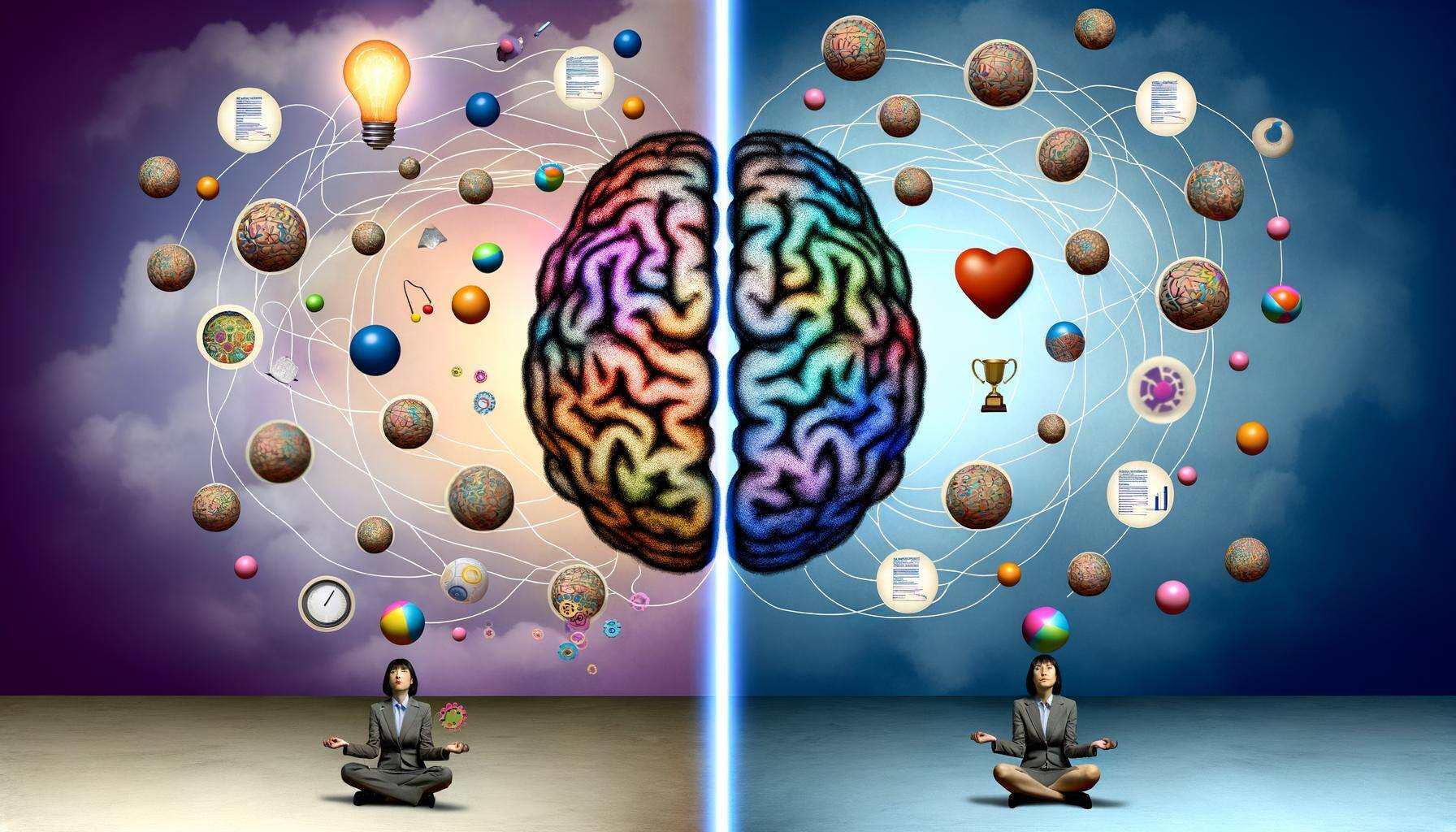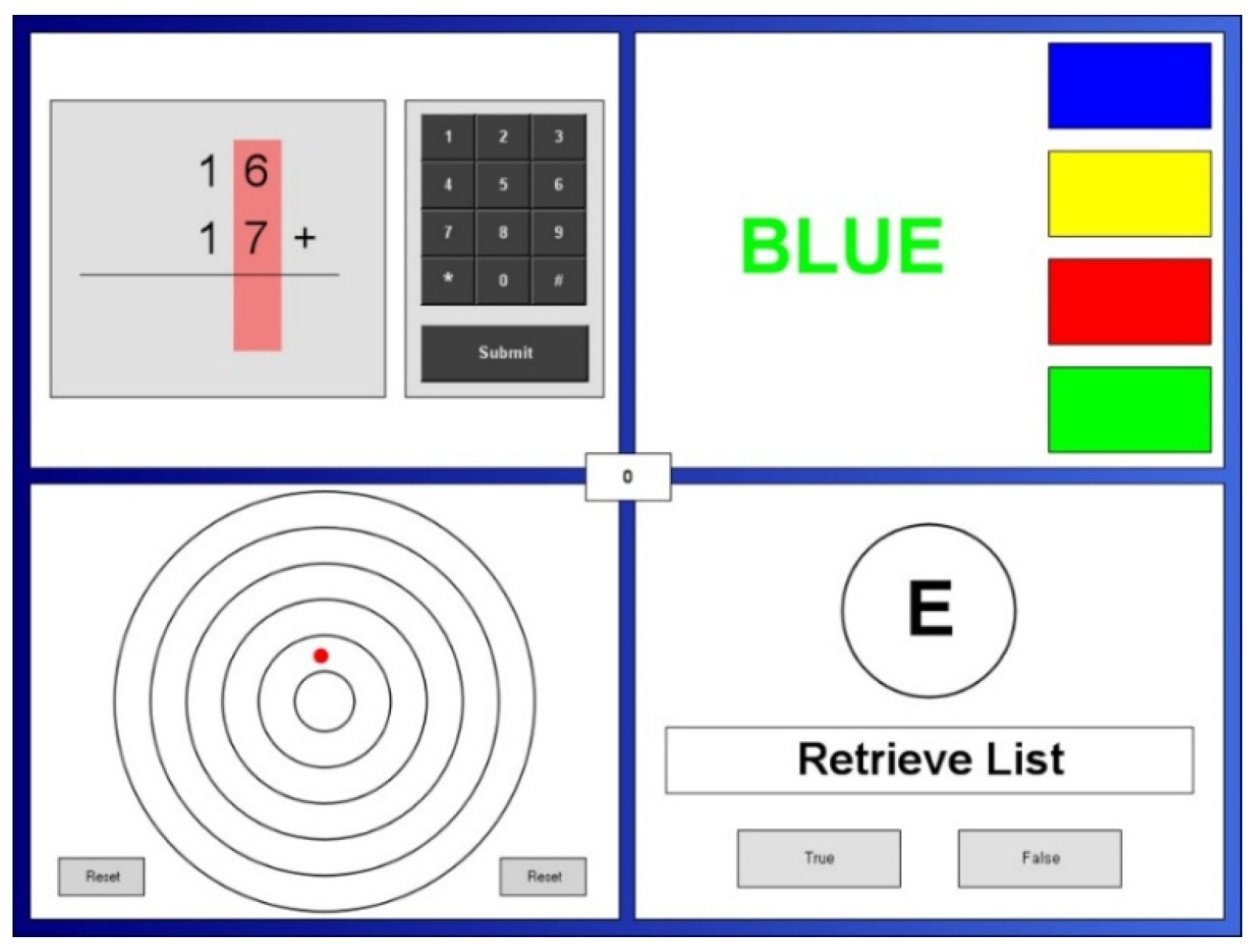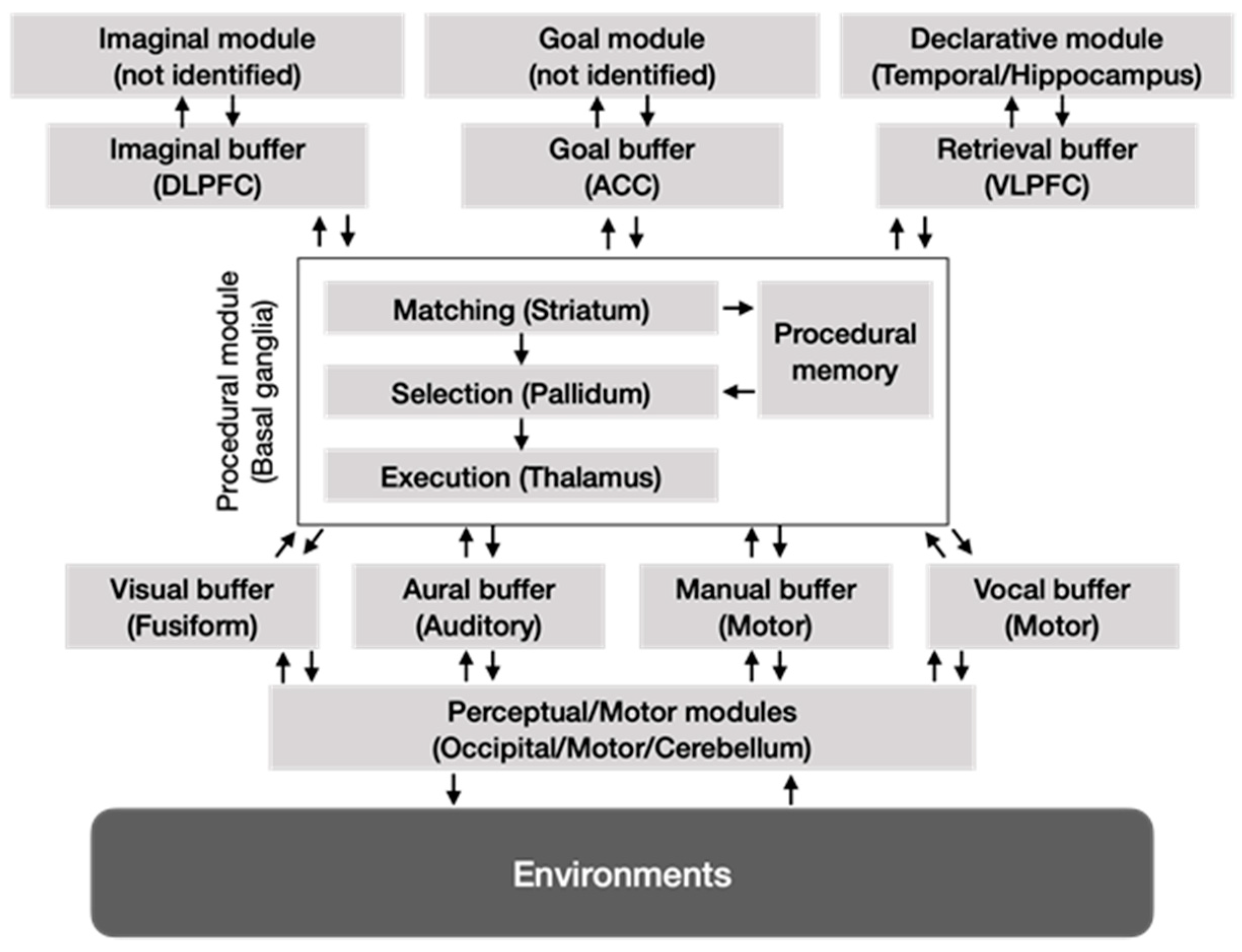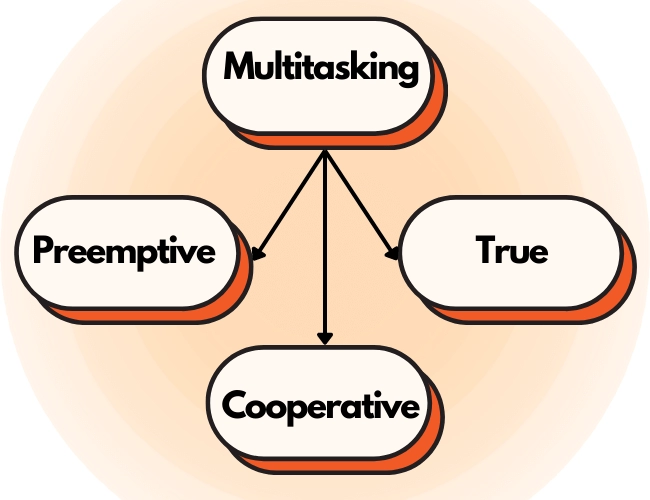Describe The Difference Between Multitasking And Combining Tasks.
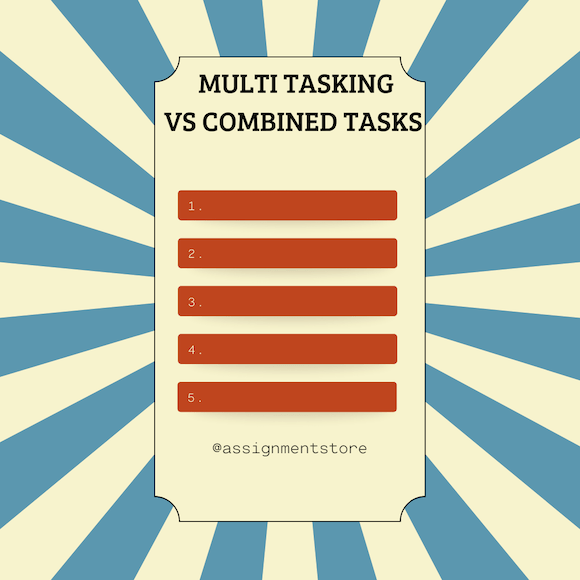
In today's relentlessly paced world, the ability to juggle multiple responsibilities is often lauded as a crucial skill. However, the line between efficient productivity and counterproductive frenzy is often blurred. This has sparked an ongoing debate about the true nature of multitasking and how it differs from strategically combining tasks.
Understanding the nuances of these two approaches is vital for maximizing efficiency and avoiding burnout. The misconception that multitasking equals productivity is prevalent. Many people believe that doing more things simultaneously equates to achieving more.
This article will delve into the distinction between multitasking and task combination. We will explore their impact on cognitive function, productivity, and overall well-being. It will offer insights into how individuals can consciously choose the approach that best suits their goals and working style.
The Nut Graf: Defining the Core Difference
At its core, multitasking involves rapidly switching focus between two or more unrelated tasks. Each task demands cognitive resources. The brain doesn't truly perform two tasks at once, but rather quickly alternates attention between them.
This constant switching incurs a significant cognitive cost. In contrast, task combination, or batching, involves grouping similar or complementary activities together. It is designed to leverage cognitive efficiency and streamline workflows.
Think of multitasking as juggling several balls in the air at once, where each ball represents a different task. Task combination is more like assembling components of a single product on an assembly line. Each station focuses on a specific set of related steps.
Multitasking: A Closer Look at Cognitive Costs
Research from institutions like Stanford University has consistently shown the detrimental effects of chronic multitasking. Frequent multitaskers often exhibit reduced attention spans, impaired memory recall, and diminished cognitive control. These findings, supported by neuroimaging studies, reveal that constant task switching alters brain activity patterns.
According to a study published in the Journal of Experimental Psychology, the cognitive effort required to switch between tasks can lead to a 40% reduction in productivity. This is accompanied by a higher error rate, compared to focusing on a single task until completion. The brain requires time to disengage from one task and re-engage with another.
Furthermore, multitasking elevates stress levels. Constant mental juggling triggers the release of cortisol, the stress hormone. Elevated cortisol over extended periods can lead to anxiety, fatigue, and reduced immune function, as reported by the American Psychological Association.
Combining Tasks: Streamlining for Efficiency
Task combination, unlike its counterpart, aims to reduce cognitive load by leveraging similarities between tasks. This involves grouping activities that require similar skills, cognitive processes, or resources. By focusing on a cluster of related tasks, individuals can minimize the mental overhead associated with switching gears.
For instance, instead of responding to emails sporadically throughout the day, one might allocate specific time slots for processing emails in batches. Similarly, a writer might dedicate one day to research, another to drafting, and another to editing, rather than attempting to perform all three activities simultaneously. This allows for deeper focus and more efficient workflow.
Organizations such as the Productivity Research Institute advocate for implementing task batching strategies to boost employee performance. This approach has been shown to improve focus, reduce error rates, and foster a greater sense of accomplishment, as highlighted in their white papers.
Practical Examples of Task Combination
Consider a marketing professional who needs to create social media content, write blog posts, and design email newsletters. Instead of bouncing between these activities haphazardly, they could dedicate specific blocks of time to each. The marketing professional might dedicate Mondays to social media, Tuesdays to blog writing, and Wednesdays to email newsletters.
An accountant could combine similar tasks by processing all invoices for a specific client on one day. They may also dedicate another block of time to reconciling bank statements for multiple accounts at the same time. This approach avoids the cognitive disruption of constantly switching between different types of financial tasks.
A student preparing for exams could group subjects with similar themes or concepts together. They might study history and social studies, or science and mathematics on the same day. This reinforces learning by creating associative connections between related topics.
Choosing the Right Approach: Context is Key
The choice between multitasking and task combination isn't always clear-cut. It depends on the nature of the tasks involved, the individual's cognitive abilities, and the specific context. For routine, low-cognitive tasks, occasional multitasking may be acceptable.
For complex, demanding tasks that require deep focus, task combination is generally the more effective and sustainable approach. However, it's crucial to recognize individual preferences and working styles. Some individuals may find that they thrive under a certain degree of variety, while others prefer a more structured and compartmentalized approach.
The National Institute of Mental Health emphasizes the importance of self-awareness in determining optimal work strategies. Monitoring one's own cognitive performance, stress levels, and attention span can help individuals tailor their workflows to maximize efficiency and well-being.
Looking Ahead: Cultivating Cognitive Control
In an increasingly demanding work environment, the ability to consciously manage attention and prioritize tasks is becoming an essential skill. Developing cognitive control through mindfulness practices, time management techniques, and strategic planning can empower individuals to make informed decisions about how they allocate their attention.
Organizations can also play a crucial role in fostering a culture that supports focused work. This involves minimizing distractions, providing employees with dedicated work spaces, and promoting policies that encourage task prioritization and time management. By prioritizing quality over quantity, employers can cultivate a more productive and sustainable work environment.
Ultimately, the distinction between multitasking and task combination highlights the importance of mindful attention and cognitive awareness in achieving optimal performance. By understanding the cognitive costs of multitasking and leveraging the benefits of task combination, individuals can navigate the demands of modern life with greater focus, efficiency, and well-being.
